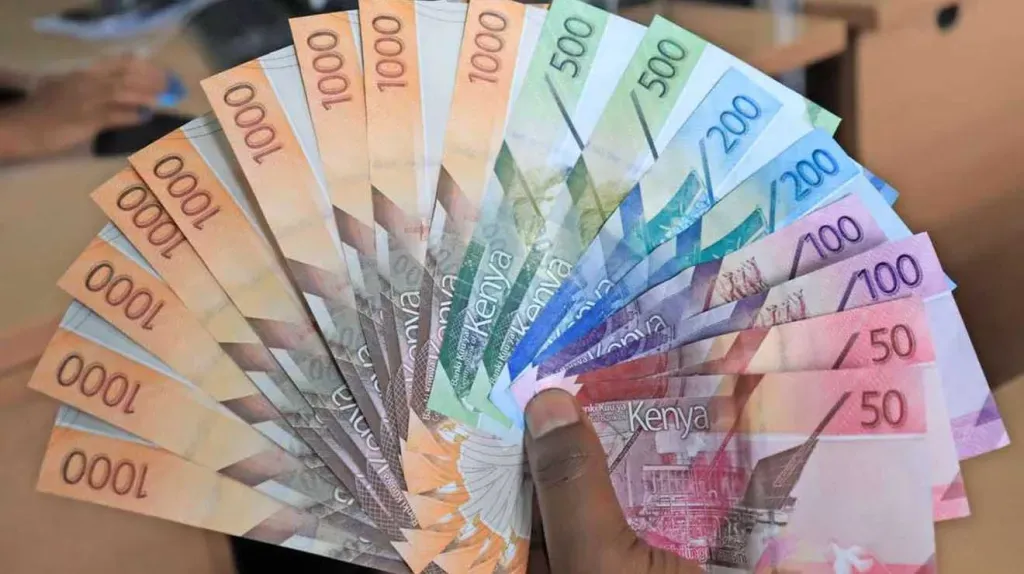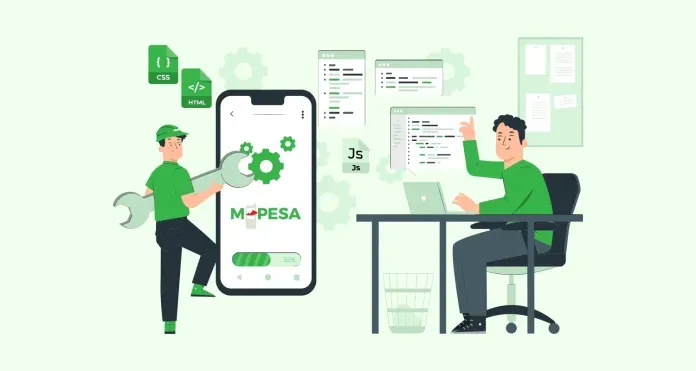Cash in Regular Bank Accounts: A Kenyan Perspective

1. Introduction: Understanding Cash in Regular Bank Accounts in Kenya
In an increasingly digital and interconnected economy, the simple act of depositing money into a bank account remains one of the most common financial habits among Kenyans. Whether for salaried employees, entrepreneurs, or informal sector workers, the bank account has evolved into more than just a place to stash cash, it’s a gateway to financial services, digital convenience, and, for some, a sense of economic stability.
Kenya has experienced a rapid transformation in financial inclusion, largely fueled by innovations like mobile money. Yet, despite the rise of fintech solutions, traditional bank accounts still play a foundational role in managing personal finances, accessing credit, paying bills, and receiving formal income. A
As of 2024, the most recent data available from the Central Bank of Kenya (CBK) indicates that 84.8% of Kenyan adults hold a formal financial account. This figure reflects a significant increase in financial inclusion compared to previous years. The rise can be attributed to the proliferation of mobile banking platforms, digital financial services, and government-led initiatives aimed at enhancing access to financial services across the country. Central Bank of Kenya
But while millions maintain regular bank accounts, few critically evaluate the costs and benefits of holding cash in them. From low interest rates to rising maintenance fees, the opportunity cost of leaving large sums in regular accounts can be substantial, especially when compared to other instruments like money market funds or treasury bills.
This article takes a deep dive into what it means to hold cash in regular bank accounts in Kenya today. We explore the types of bank accounts available, why Kenyans use them, how they compare to other financial instruments, and what factors to consider when deciding where to park your money.
2. Types of Bank Accounts in Kenya

Banking in Kenya is no longer a one-size-fits-all affair. Whether you’re a boda boda rider in Kisumu, a tech entrepreneur in Nairobi, or a farmer in Eldoret, there’s likely a bank account tailored to your needs. Below is a breakdown of the most common types of bank accounts available in Kenya today:
a). Savings Accounts
These are the most widely used types of accounts by individuals and families. Savings accounts are designed to hold funds securely while offering minimal interest, typically between 2% to 4% annually, depending on the bank. Most savings accounts come with limits on monthly withdrawals, which is intended to encourage saving discipline.
Notably, many are integrated with mobile platforms like KCB M-PESA, M-Shwari, or Eazzy Save by Equity Bank, which allow users to deposit and withdraw via mobile apps or USSD codes, making them highly accessible to the mass market.
Pros:
- Easy to open and manage
- Mobile integration
- Some interest earned
Cons:
- Very low returns
- Charges on transactions or inactivity in some cases
b). Current Accounts
Primarily used for frequent transactions, current accounts are favored by businesses, professionals, and individuals who prioritize liquidity over interest. These accounts often come with zero interest but provide unrestricted access to funds through cheques, debit cards, and online banking.
Pros:
- Unlimited withdrawals
- Suitable for business transactions
- Overdraft facilities available in some cases
Cons:
- No interest earned
- Monthly ledger or maintenance fees can apply
c). Fixed Deposit Accounts
For individuals seeking to earn a higher return on idle cash, fixed deposit accounts offer a safer option compared to investments. These accounts require the depositor to lock in their money for a set period—typically between one month and one year—in exchange for better interest rates, ranging between 5% and 10% annually.
Pros:
- Higher interest than savings accounts
- Guaranteed returns
Cons:
- Early withdrawal penalties
- Funds are not readily accessible
d). Foreign Currency Accounts
As Kenya becomes more involved in international trade and attracts foreign remittances, foreign currency accounts have gained popularity. These allow customers to hold and transact in USD, GBP, EUR, and other major currencies. They’re especially useful for diaspora recipients, importers, and export-oriented businesses.
Pros:
- Hedge against forex fluctuations
- Ideal for international business
Cons:
- Exposure to exchange rate volatility
- Often incur higher charges than regular accounts
e). Joint Accounts
Joint accounts are commonly used by families, business partners, or married couples, allowing multiple individuals to access the same pool of funds. They can be structured as “either/or” (either party can transact) or “both/all to sign” for added security.
Pros:
- Shared responsibility and convenience
- Can aid in managing household or business finances
Cons:
- Potential for disputes
- Withdrawal limitations based on the agreement
f). Youth & Student Accounts
Targeted at minors and university students, these accounts are designed to cultivate early saving habits. They generally have low or zero fees, smaller deposit requirements, and limited transaction volumes.
Pros:
- Affordable and easy to use
- Encourages financial literacy
Cons:
- Limited features and access
g). Digital-Only Bank Accounts
A newer breed of banking is emerging in Kenya: digital-only or mobile-first bank accounts. Platforms like NCBA Loop, Absa Timiza, and Branch are challenging traditional banks by offering interest on savings, digital loans, and money management tools without the need for physical branches.
Pros:
- Instant setup via smartphone
- Lower fees and fast service
- Enhanced budgeting features
Cons:
- Limited in-person support
- Digital literacy required
3. Why Kenyans Keep Cash in Bank Accounts

Despite the rise of investment alternatives and digital savings tools, many Kenyans still prefer to keep a significant portion of their cash in regular bank accounts. But why is this the case? The answer lies in a mix of practical, psychological, and infrastructural factors.
a). Daily Transaction Needs
At the most basic level, Kenyans use bank accounts because they need quick access to money. From paying school fees and rent to buying groceries and settling utility bills, having cash on hand—or at least readily accessible through mobile platforms—is a necessity. Bank accounts, especially those linked to mobile wallets like M-PESA, make it easy to move funds between platforms instantly.
For example, someone might receive their salary in a bank account and then split it into:
- Rent to a landlord’s bank or SACCO account
- School fees via a paybill number
- Daily spending transferred to their M-PESA wallet
- A small portion set aside in a savings or MMF account
This versatility makes bank accounts a central hub in the personal finance journey of many Kenyans.
b). Salary and Government Payments
Most formal employment in Kenya pays through bank transfers. Employers prefer this system because it is secure, easy to track, and aligns with legal and tax reporting obligations. Similarly, government disbursements—from SHIF refunds to pension payments and NGAAF loans—are channeled through formal banking systems.
This institutional reliance on banks means many Kenyans must maintain an active account, even if it’s just to receive income or benefits.
c). Security and Safety
Compared to keeping cash at home, a bank account offers greater security against theft, fire, or misplacement. In high-crime areas or informal settlements, the thought of sleeping with large sums of money in the house is a genuine concern.
Even if the interest earned is negligible, the psychological peace of mind that comes with knowing money is “safe” in the bank plays a major role in why people choose to keep it there.
d). Ease of Access through Mobile Integration
Thanks to integrations with mobile money services, most Kenyan bank accounts now offer 24/7 access via mobile phones. USSD codes and banking apps allow users to:
- Check balances
- Transfer funds
- Request mini-statements
- Pay bills or purchase airtime
This fusion of banking and mobile technology means users no longer need to queue at ATMs or branches to access their funds. In fact, for many, the phone has replaced the ATM card altogether.
e). Financial Documentation and Credit Eligibility
Maintaining a formal bank account helps users build a financial footprint. Banks and lenders rely on this history to assess creditworthiness. A consistent record of deposits, savings, and transactions can make it easier to qualify for:
- Personal or business loans
- Credit cards
- Mortgages
- Asset financing (e.g., car loans)
This is especially important as credit scoring models become more sophisticated and digital.
4. Comparing Bank Accounts vs. Money Market Funds, T-Bills, and Other Investments
While holding cash in a bank account is convenient, it often yields poor returns—especially when adjusted for inflation. Many Kenyans are waking up to the reality that their money could be working harder elsewhere. Here’s how bank accounts compare to some of the most popular low-risk financial instruments in Kenya.
a). Money Market Funds (MMFs)

Money Market Funds are collective investment schemes regulated by the Capital Markets Authority (CMA). They pool investor money and place it in short-term, low-risk securities like treasury bills, term deposits, and government bonds.
Returns:
- 8% to 11% annually (as of 2024)
Liquidity:
- Funds can usually be withdrawn within 24 to 72 hours
Minimum Investment:
- As low as KES 100 with some providers
Popular Providers in Kenya:
- CIC Asset Management
- NCBA Unit Trust
- Sanlam
- Britam
Pros:
- Higher returns than bank savings accounts
- Highly liquid
- CMA-regulated and low risk
Cons:
- Slightly longer withdrawal time compared to bank accounts
- Some platforms require mobile literacy or app access
b). Treasury Bills (T-Bills)

Issued by the Central Bank of Kenya, T-Bills are government debt securities sold in tenures of 91, 182, and 364 days. They are considered virtually risk-free.
Returns:
- Typically between 10% and 14%, depending on the tenure and market demand
Liquidity:
- Locked in until maturity (unless sold in the secondary market)
Minimum Investment:
- KES 100,000
Pros:
- Guaranteed returns
- Ideal for medium-term savings goals
- Can be reinvested for compounding returns
Cons:
- Not ideal for people who need constant access to funds
- Requires registration with CBK and auction participation
c). SACCO Deposits

Savings and Credit Cooperative Organizations (SACCOs) offer members a place to save while also qualifying for loans. Members earn interest on deposits and dividends on shares.
Returns:
- Typically between 6% and 12% annually
Liquidity:
- Savings are semi-liquid; early withdrawal might be limited
Pros:
- Strong community backing
- Access to low-interest loans
- Ownership via shareholding
Cons:
- Limited digital features
- Governance challenges in poorly run SACCOs
d). Summary Comparison Table
| Instrument | Average Return | Liquidity | Risk Level | Minimum Investment | Best For |
| Savings Account | 2%–4% | Very High | Very Low | None | Daily spending and safety |
| Fixed Deposit | 5%–10% | Low | Low | KES 20,000–100,000 | Short-term capital preservation |
| MMF | 8%–11% | High | Low | KES 100–1,000 | Emergency funds and buffers |
| T-Bills | 10%–14% | Medium–Low | Very Low | KES 100,000 | Risk-averse investors |
| SACCO | 6%–12% | Medium | Low | Varies by SACCO | Long-term saving and loans |
Key Takeaway
While bank accounts remain essential for liquidity and access, they are not ideal for wealth building or preserving value in an inflationary environment. Tools like MMFs and T-Bills offer higher returns with manageable risk, making them increasingly attractive for middle-income and financially literate Kenyans looking to optimize their money.
5. Banking Fees and the Cost of Convenience
One of the critical, and often underappreciated, aspects of holding cash in a regular bank account in Kenya is the cost of doing so. While banks offer security and access, they don’t do it for free. In fact, many Kenyans are quietly losing value through transaction fees, ledger fees, maintenance fees, and mobile banking charges.
a). Monthly Ledger Fees
Many commercial banks in Kenya charge monthly maintenance or ledger fees—a flat rate deducted just for keeping your account open, regardless of how much money is in it. These can range from KES 50 to KES 300 per month, depending on the account type.
For low-income earners or people who rarely use their bank accounts, this becomes a slow but steady erosion of their funds.
b). Withdrawal and Transfer Charges
Accessing your own money is also expensive. Some common charges include:
- ATM withdrawal fees (KES 30–KES 100)
- Over-the-counter withdrawals (up to KES 200)
- Mobile banking transfers (KES 30–KES 75 per transaction)
- Internal bank transfers (KES 50–KES 150 depending on the channel)
This means even something as simple as withdrawing KES 1,000 could cost KES 50–KES 100, especially if done through a mobile platform.
c). SMS Alerts and Statement Fees
Most banks charge clients KES 20 to KES 50 per month for SMS notifications. Others charge for printed bank statements or mini-statements, usually KES 100 to KES 300 per request.
While these fees may appear small in isolation, they compound quickly, especially for individuals who transact often.
d). Dormant Account Penalties
If an account goes unused for more than 6 to 12 months, many banks classify it as dormant and apply reactivation or penalty charges. Some clients are shocked to discover that their account balance has vanished simply due to inactivity and accumulated maintenance fees.
6. The Rise of Digital-First and Mobile-Only Banking in Kenya

In response to high banking fees, slow processes, and poor customer service at traditional branches, a new wave of digital-first and mobile-only banks has begun to reshape Kenya’s financial services industry. These fintech-led platforms offer low-cost, mobile-driven banking solutions that are especially appealing to the youth and digital-savvy population.
a). Neo-Banks and Digital Wallets
Neo-banks operate without physical branches and rely entirely on apps and digital platforms. In Kenya, services such as Branch, Tala, KCB M-PESA, M-Shwari, Timiza, and Aspira have become popular by offering:
- Instant loans
- Interest-earning savings
- Zero monthly fees
- Mobile-first interfaces
These platforms combine the convenience of mobile money with the features of a traditional savings or credit facility.
b). M-PESA Integration

The partnership between mobile money platforms like M-PESA and commercial banks has blurred the line between wallets and bank accounts. Products like M-Shwari and KCB M-PESA offer:
- Interest-earning savings
- Quick mobile loans
- Seamless transfers between wallet and savings
For many Kenyans, this has eliminated the need to visit a physical bank altogether.
c). Cost Advantage
Digital banks are often much cheaper to use than their traditional counterparts:
- No ledger or maintenance fees
- Free internal transfers
- Competitive interest on savings (e.g., 6% p.a. on M-Shwari)
- Instant credit without paperwork
This appeals to cost-sensitive consumers who are tired of paying to use their own money.
d). Accessibility and Financial Inclusion
Digital banks have brought financial services to rural areas where brick-and-mortar banks are scarce. With just a phone and ID, anyone can:
- Open an account
- Apply for credit
- Track savings goals
This has expanded financial inclusion dramatically, especially among:
- Youth aged 18–35
- Women in informal sectors
- Small-scale entrepreneurs
e). Risks and Limitations
While mobile-only banking is revolutionary, it’s not without risks:
- Data privacy concerns
- Over-reliance on short-term loans (debt cycle risk)
- Limited product offering compared to full-service banks
Additionally, many digital platforms still depend on underlying partnerships with traditional banks, meaning they’re not fully independent in operations or security structures.
7. Inflation and the Silent Erosion of Cash Value

While Kenyan bank accounts offer convenience, security, and accessibility, they are not immune to a powerful economic force: inflation. Every year, the prices of goods and services rise, reducing the purchasing power of your money. When your cash is sitting idle in a bank account that earns little or no interest, it’s slowly but surely losing value.
a). Understanding Inflation in the Kenyan Context
Kenya has experienced moderate to high inflation in recent years. According to the Kenya National Bureau of Statistics (KNBS), the average inflation rate between 2020 and 2024 ranged between 6% and 9% annually. However, certain essential items such as maize flour, electricity, cooking gas, and transport have seen even higher price increases.
If your bank account yields 2% interest annually, but inflation is running at 8%, your real return is:
2% – 8% = -6%
This means you’re effectively losing 6% of your money’s value each year.
b). Hidden Cost of “Safe Money”
Many Kenyans feel a sense of safety having KES 100,000 sitting in a savings account. But after a year of 8% inflation, that KES 100,000 can only buy KES 92,000 worth of goods. Over five years, the erosion is even more pronounced unless that money is moved into an asset or instrument that outpaces inflation.
8. Strategies for Managing Cash Wisely in Kenya

So how can Kenyans protect their money from being eaten away by inflation, fees, and idle time? The solution lies in being strategic with how you allocate and hold cash. Here are some practical and Kenya-specific strategies:
a). The 3-Bucket Approach
Divide your cash into three distinct categories:
- Bucket 1: Daily and Monthly Needs
- Amount: 1 to 2 months of expenses
- Where to keep it: Regular current or savings account (with mobile access)
- Purpose: Pay bills, make purchases, send money, cover daily living
- Bucket 2: Emergency Fund
- Amount: 3 to 6 months of expenses
- Where to keep it: Money Market Fund (MMF) or Fixed Deposit
- Purpose: Handle unexpected costs like job loss, illness, or urgent travel
- Bucket 3: Medium to Long-Term Cash
- Amount: Flexible, based on goals
- Where to keep it: T-Bills, SACCOs, cooperative investment groups (chamas)
- Purpose: Preserve value, earn passive returns, or fund future goals like education or business capital
This model ensures liquidity, safety, and growth, each in its appropriate layer.
b). Regular Cash Sweeps
If you receive regular income via a bank account, consider setting up monthly “sweeps” to automatically move excess cash into better-yielding options. For instance:
- Sweep KES 20,000 every end of month to an MMF
- After 3 months, consolidate KES 60,000 and invest in a T-Bill
- Every December, review and reallocate based on performance and needs
This automation ensures you’re consistently optimizing your idle funds.
c). Leverage Digital Investment Platforms
Thanks to fintech apps like Ndovu, Hisa, Chumz, or Craft, you can invest from as little as KES 100. Many of these platforms now offer:
- MMFs
- T-Bills
- REITs (Real Estate Investment Trusts)
- Dollar-based investments
For the urban Kenyan with access to internet and a smartphone, these tools democratize investment and remove the excuse of “I don’t know where to start.”
d). Monitor Fees and Optimize for Cost
Compare banking services and switch to low-fee options. Some banks, like Equity, NCBA Loop, and Family Bank, offer zero-fee accounts or mobile-first savings tools. Choose institutions that:
- Charge no monthly fees
- Offer free mobile transfers
- Provide interest-bearing accounts (even if minimal)
Also, beware of hidden costs in mobile apps. Before making any transfer or transaction, check the fee summary.
e). Financial Literacy and Habit Building
Managing cash wisely is not just about where you put your money, but how you behave with it. Consider:
- Attending personal finance workshops (e.g., from Centonomy, MoneyWise Kenya)
- Reading finance blogs and newsletters
- Creating monthly budgets and tracking spending
The goal is to shift from reactive saving to proactive money planning.
9. Conclusion and Outlook: Evolving Role of Banks in Kenya’s Financial Future

Kenya’s banking sector has come a long way—from manual passbooks and long queues at bank halls to mobile-first financial ecosystems with near-instant access. However, despite the evolution in form, the function of regular bank accounts remains limited if not paired with informed financial strategy.
a). The New Role of Banks in the Financial Ecosystem
Banks are no longer the default custodians of savings—they’re becoming platform enablers. Increasingly, commercial banks are integrating with fintech solutions, allowing customers to:
- Invest in government securities through apps
- Access third-party money market funds
- Automate savings and budgeting tools
This trend reflects a shift from siloed banking to open finance, where banks must partner with or mimic the innovation of fintech startups to remain relevant.
b). Policy and Regulation: Room for More Consumer Protection
The Central Bank of Kenya (CBK) has been proactive in driving financial inclusion, but more can be done to protect account holders from:
- Predatory fees
- Unclear loan terms
- Low transparency on savings yields
We could see policy shifts toward:
- Mandatory fee disclosure summaries
- Standardized interest reporting formats
- Protection of customer funds in digital wallets and investment platforms
Additionally, CBK’s drive to integrate fintech regulation under its Digital Credit Providers framework could lead to more stability and trust in mobile banking platforms.
c). The Rise of the Empowered Kenyan Consumer
The modern Kenyan is not just a bank customer—they’re a financial decision-maker. With access to more tools, data, and community learning, Kenyans are beginning to:
- Compare interest rates actively
- Shift idle funds from bank accounts to MMFs or T-Bills
- Use SACCOs and digital apps for targeted investment
This consumer awakening is reshaping the demand curve, forcing traditional financial players to either evolve or risk irrelevance.
d). Balancing Safety, Liquidity, and Growth
The key takeaway is not that regular bank accounts are bad—but rather that they are not designed to be wealth builders. They’re meant to serve specific functions:
- Facilitate everyday transactions
- Offer liquidity
- Provide a sense of security
But when used as the primary store of wealth, they can leave you vulnerable to:
- Inflation
- Unnecessary fees
- Missed opportunities for growth
The smart Kenyan approach is multi-tiered: use your bank for what it does best, but actively redirect surplus funds into better-yielding, inflation-beating instruments.
Final Thoughts
In Kenya today, holding cash in a regular bank account is a starting point, not a strategy. As the financial landscape continues to digitize and democratize, individuals must take control of their money through intentional planning, diversified cash placement, and ongoing learning.
The banks of tomorrow will likely be platforms rather than fortresses, and the Kenyan of tomorrow will be an informed, proactive investor, not just a passive saver.
Article, Financial and News Disclaimer
The Value of a Financial Advisor
While this article offers valuable insights, it is essential to recognize that personal finance can be highly complex and unique to each individual. A financial advisor provides professional expertise and personalized guidance to help you make well-informed decisions tailored to your specific circumstances and goals. Beyond offering knowledge, a financial advisor serves as a trusted partner to help you stay disciplined, avoid common pitfalls, and remain focused on your long-term objectives. Their perspective and experience can complement your own efforts, enhancing your financial well-being and ensuring a more confident approach to managing your finances. Disclaimer: This article is for informational purposes only and does not constitute financial advice. Readers are encouraged to consult a licensed financial advisor to obtain guidance specific to their financial situation.
Article and News Disclaimer
The information provided on www.serrarigroup.com is for general informational purposes only. While we strive to keep the information up to date and accurate, we make no representations or warranties of any kind, express or implied, about the completeness, accuracy, reliability, suitability, or availability with respect to the website or the information, products, services, or related graphics contained on the website for any purpose. Any reliance you place on such information is therefore strictly at your own risk. www.serrarigroup.com is not responsible for any errors or omissions, or for the results obtained from the use of this information.
All information on the website is provided on an as-is basis, with no guarantee of completeness, accuracy, timeliness, or of the results obtained from the use of this information, and without warranty of any kind, express or implied, including but not limited to warranties of performance, merchantability, and fitness for a particular purpose. In no event will www.serrarigroup.com be liable to you or anyone else for any decision made or action taken in reliance on the information provided on the website or for any consequential, special, or similar damages, even if advised of the possibility of such damages. The articles, news, and information presented on www.serrarigroup.com reflect the opinions of the respective authors and contributors and do not necessarily represent the views of the website or its management. Any views or opinions expressed are solely those of the individual authors and do not represent the website's views or opinions as a whole.
The content on www.serrarigroup.com may include links to external websites, which are provided for convenience and informational purposes only. We have no control over the nature, content, and availability of those sites. The inclusion of any links does not necessarily imply a recommendation or endorsement of the views expressed within them. Every effort is made to keep the website up and running smoothly.
However, www.serrarigroup.com takes no responsibility for, and will not be liable for, the website being temporarily unavailable due to technical issues beyond our control. Please note that laws, regulations, and information can change rapidly, and we advise you to conduct further research and seek professional advice when necessary. By using www.serrarigroup.com, you agree to this disclaimer and its terms.
If you do not agree with this disclaimer, please do not use the website. www.serrarigroup.com, reserves the right to update, modify, or remove any part of this disclaimer without prior notice. It is your responsibility to review this disclaimer periodically for changes.
Serrari Group 2025




